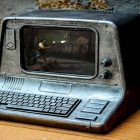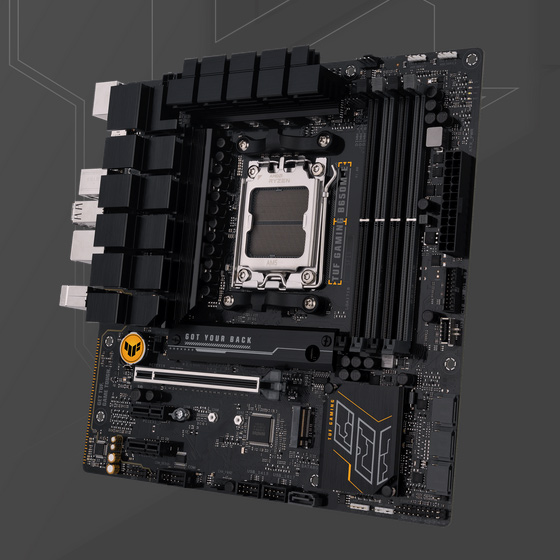The best PC for blackouts and apocalipsys

Google is full of guides like “the most productive setup” or “the most cost-effective setup.” None of them matter if your PC has to survive bombings and blackouts. I’ll share my experience building a PC for blackouts without obsessing over specific models — because if you read this in a year or two, those exact parts will be outdated. But the principles and approach will still hold. But the principles and approach will still hold.
I’m going to write strictly about Ukrainian realities — not “which PC is the best” in theory, but which PC performs best in wartime and during blackouts.
Here are the starting conditions:
1 – Our homes get shelled regularly by orcs.
2 – Regular blackouts, 5–8 hours without electricity.
3 – When power is on, the voltage fluctuates between 190 and 250 volts.
4 – I have an EcoFlow workstation (this is what will power the PC), a generator (backup), and an old UPS converted into a bigger external battery (my routers and internet terminals run from it).

I need the most reliable, the most powerful, and the most economical PC possible. Everyone has their own interpretation of “reliable,” “powerful,” and “economical,” so here’s what these mean for me:
Reliable: The PC must run for 2–3 weeks without shutting down, stay stable, not overheat, not glitch, and never freeze.
Powerful: Since I do web development, one of my main tools is a local server (actually, not just one). On it, I host dozens of client projects. Add a few editors and graphic software… Don’t worry, just trust me — budget CPUs (R3/i3) and mid-range ones (R5/i5) are nowhere near enough. I need lots of cores.
Economical: My EcoFlow RIVER Pro is limited — so I need a PC with minimum power consumption must be able to run at least 3–4 hours on this station.
Intel or AMD for a PC for blackouts?
So, let’s start with the CPU. The choice here is obvious — 7nm and 120+ TDP even in younger models versus 5nm and 65 TDP. Sorry, Intel. You show similar performance to AMD, but you burn twice as much electricity. And your cooling system will also suck down more energy… Sorry Intel, but in bombings and blackouts, you’re the worse choice than AMD. Every programmer and freelancer I spoke with agrees — process tech and thermal efficiency rule.
Once the manufacturer is decided, we need to think about generation and form factor. AM4+DDR4 or AM5+DDR5? I won’t tell you what to pick — it depends on your budget. At the time of writing, AM4+DDR4 still delivers plenty of power and costs far less than AM5+DDR5. But upgrading later would mean changing not only the CPU but also the motherboard and RAM. I personally chose AM5+DDR5 for future-proofing.
Now, knowing the manufacturer and form factor, the CPU choices narrow. At the time of writing, it was basically a choice between Ryzen 7600X, 7700, and 7700X. The “X” or “X3D” denotes optimization for gaming and 3D graphics. But… sorry AMD, during bombings and blackouts, I don’t care about gaming. And the TDP of those CPUs is higher, so they don’t suit my tasks.
Three Axes
So the winner is clear — Ryzen 7 7700. Wow, see the triple sevens? Just like our M777 artillery that turns Russian invaders into fertilizer for Ukrainian soil. Our soldiers lovingly call them “three axes” because the number 7 resembles an axe. And now, I’ll have my own three axes. If you read this years later when the Ryzen “three axes” loses relevance, just remember the principle: choose the most powerful CPU with minimal thermal output. The R7 7700 cools perfectly with a regular air cooler — that’s exactly what you need. Go for a current “high-end” CPU that doesn’t need exotic cooling.
Once the CPU is set, it’s time for the motherboard. It largely determines the reliability of the whole system. For years I’ve preferred ASUS, so I started looking at this brand under AM5 socket.
I picked ASUS TUF GAMING B650M-E. Reliability is top-notch, with quality chokes and capacitors, a beefy VRM heatsink, an extra heatsink for M.2 SSDs, and four RAM slots. It has only one minor flaw — more on that later.

TUF stands for The Ultimate Force, designed for powerful workstations. The ROG (Republic of Gamers) line doesn’t suit me — I don’t game; I want max performance and minimum power draw.
The graphics card is also Asus: GeForce RTX 4060 Dual V2 OC. Plenty of power for even high-end games, yet draws very little energy. One monitor runs Visual Studio Code, the other a browser — the fans don’t even spin. Quiet and efficient.
RAM and SSD
Next, the components that barely affect power consumption — so I’ll just list what I picked:
- RAM: G.Skill DDR5 32GB
- SSD1 (Windows): Lexar NM800 Pro 3D NAND TLC 512GB M.2
- SSD2 (work): Kingston NV3 3D NAND 2TB M.2
If you read this a year or two from now, these parts may no longer be relevant. For the same money, you could get bigger RAM and SSDs. So for RAM and SSDs, choose according to the principle: “as many fast gigabytes as possible for the least money.” Pay attention to speed — it matters.
Now, about the ASUS TUF “flaw” I mentioned earlier.
Maybe it’s not a flaw, but rather a nuance. There’s a nuance with SSD heatsinks. The Lexar came with its own heatsink, while the Kingston didn’t, so I used the heatsink included with the motherboard. Modern SSDs need cooling to reach their advertised performance — heatsinks are a must. In the ASUS TUF B650M, the SSD slots are on both sides of the GPU slot, and the top slot sits right between the two hottest components — the GPU and the CPU.
The heatsink included with the motherboard is bigger than the one that came with the Lexar SSD. So even though the Kingston sits in a less ideal spot, the larger heatsink keeps its temperature roughly the same.
Still, if the guys at Asus ever read this — consider the possibility of mounting both SSDs under the GPU.
Case, Power Supply, and Performance
All these components are powered by a Chieftec A-135 PSU — quiet and with multiple protection stages.
Everything is housed in a Be Quiet! Silent Base 802 case. It’s huge, with excellent airflow, a wide compartment on the right for cable management, and comes with several quiet 140mm fans.
With two monitors and moderate load (server + VS Code + Photoshop/Figma + several browsers + console/FTP/SSH), I can work autonomously for about 3.5 hours. Remove one monitor, skip Photoshop, and run a lighter server — almost 4 hours of battery life.
As a result, with two monitors and an average load (server + VS Code + Photoshop/Figma + several browsers + console/FTP/SSH) I can work autonomously for about 3.5 hours. If I leave only one monitor, abandon Photoshop and switch to a lighter server, this PC for blackouts will run for almost 4 hours.
Not bad, I’d say. What do you think?
